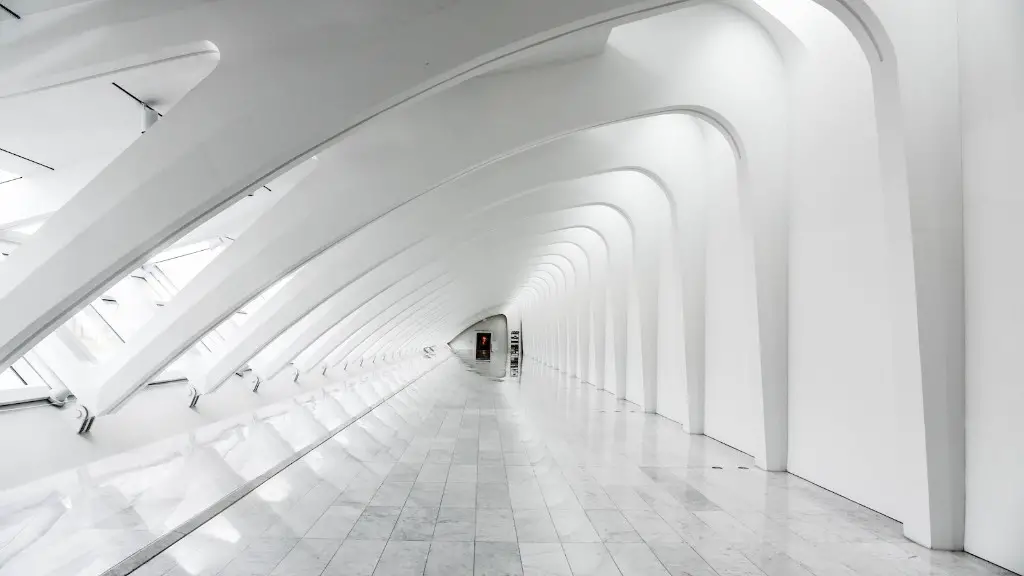Why Did Architecture Change
Architecture is one of the oldest and most complex forms of artistic expression and is often a reflection of a particular culture and time. From the earliest recorded evidence of structures made of mud and stone, to the sleek modern designs of today, architecture has undergone a radical transformation. But why did architecture change? It is a fascinating question which has left scholars and architects pondering for centuries.
One of the most enduring reasons for the evolution of the built environment is the emergence of new social, economic and technological forces. In some cases, major developments in engineering or construction have resulted in complex new designs that would not have been possible before. In other cases, cultural and political changes have generated new demands on architects to create structures to evoke new ideologies and symbols.
The Industrial Revolution of the 19th century, for instance, was a major catalyst for change in architecture. Advances in technology meant that for the first time large-scale buildings could be built, which allowed for the construction of skyscrapers in cities across Europe and the United States. Moreover, the introduction of steel and iron frames made it possible to construct bigger and more efficient structures.
Developments in mass production and new assembly techniques further accelerated the process and contributed to a greater availability of materials in different shapes and sizes. The advent of modernist ideas around the same time played a significant role too. This school of thought focused on pure lines, abstract forms and the notion of a ‘machine aesthetic’, which resulted in a new style of architecture. This style was starkly different to earlier designs, which had often been ornate and elaborate.
As well as technological and ideological developments, urbanization has also contributed to changes in the ways buildings are designed. As populations have become increasingly concentrated in large cities, architects have had to respond to new demands by creating dense, functional designs with improved efficiency. This has been particularly evident in transport hubs, where increased urban density has necessitated engineering solutions to move people efficiently.
Furthermore, advances in computer modelling and design software have enabled architects to create increasingly elaborate and complex designs. This has enabled architects to explore new possibilities and create stunning visual features that had, until recently, been unimaginable.
The changes in architecture over the centuries are undeniable. That said, while new technologies and ideologies have played a crucial role in the evolution of the built environment, architectural styles have also been shaped by subtle social and cultural forces. Art historians and anthropologists have argued that a certain level of continuity is still visible, as architects of different periods often draw upon the ideas and styles of the past.
Environmental Changes
Until recently, environmental considerations were rarely at the forefront of architectural designs. However, in recent decades there has been a shift towards sustainability and the use of technology to create eco-friendly designs. This has resulted in a growing trend towards green architecture, which emphasizes the integration of environmentally friendly materials, efficient energy systems, and low-carbon construction.
Advances in technology have also enabled architects to create smart designs that can respond and adjust in response to changes in the environment and user behaviour. Using sensor systems and automated systems, architects are now able to create smarter buildings that can regulate their own energy usage and provide a comfortable living environment.
The advent of 3D printing and robotics has also enabled a whole new paradigm of design to emerge. By using additive manufacturing techniques, architects are now able to create highly intricate and complex designs that would have been impossible only a few years ago.
Finally, AI and machine learning have also made their mark on architectural designs. By making use of computation and data analysis, architects are now able to create more efficient designs and simulate how their projects would respond to different environmental factors.
The Role of Preservation
While architecture has changed dramatically over the centuries, there is also a growing trend towards the preservation of traditional designs and structures. Governments and organisations are now using legislation and other initiatives to protect and restore historical buildings. The reasons for this range from preserving the cultural heritage to providing a glimpse into the past.
Advocates of preservation argue that historical architecture is important not just for aesthetic reasons, but also for practical ones. These structures have stood the test of time, and can provide valuable insights into the materials, technologies, and design practices of the time. As such, they can be invaluable resources for understanding the evolution of architectural styles.
At the same time, restoration and preservation can also provide economic benefits. Historical buildings and neighbourhoods can often be used as tourist attractions, thus creating new job opportunities and economic growth. Furthermore, preserving traditional designs can also be a way of re-establishing a sense of identity in a particular place.
Diversity and Cultural Expression
Architectural designs have always had a strong connection to culture, and this continues to be the case today. In many cases, architects attempt to imbue their designs with elements that will evoke a particular culture, such as particular symbols or shapes. This is often done to create a sense of connection with a particular place or people.
At the same time, architects are now facing new challenges in responding to an increasingly diverse society. Diversity in architecture entails being sensitive to the rituals and beliefs of different cultures and creating designs that reflect this diversity. This requires an understanding of the culture and an appreciation of its values and practices.
Furthermore, cultural diversity also entails recognising the distinct needs of different segments of society. This has become increasingly important in recent years, with an emphasis on creating inclusive and accessible spaces. Architects are rising to the challenge by incorporating designs that are sensitive to the needs of all users, such as those with disabilities or special needs.
The Future of Architecture
The future of architecture is difficult to predict as it is inextricably linked to wider economic, technological, and cultural trends. Technology holds the key to many future trends, with the increased use of automation and AI expected to change the way buildings are designed, constructed and maintained.
The challenges posed by climate change, such as rising sea levels and more extreme weather patterns, will also require new design solutions. Creative approaches, such as the use of materials that can absorb carbon dioxide, will become increasingly important as architects attempt to reduce the environmental impact of the built environment.
Finally, the role of the architect is also expected to change. Architects are increasingly being seen as not just designers, but also as agents of change. This means they will be expected to take a more holistic view of the built environment and to consider the wider implications of their designs.
The Use of Technology
The use of technology has been at the forefront of architectural changes in recent years. With rapid advances in computing power, software and digital fabrication techniques, architects now have access to powerful tools which are enabling them to create faster, more efficient and complex designs.
The introduction of digital tools has also allowed architects to simulate the effects of different designs, such as the thermal and acoustic properties of a room and the impact of sunlight. This has enabled architects to create more energy-efficient designs, which can help to reduce the carbon footprint of buildings.
At the same time, advances in augmented reality, virtual reality, and robotics have enabled architects to explore new design possibilities. By combining these technologies with conventional materials and construction techniques, architects are now able to create stimulating and interactive spaces.
The Impact of Social Media
Another development that has had a major impact on architecture is the rise of social media. In addition to providing a platform for architects to showcase their designs and connect with potential clients, many architects are now using social media as a tool for collaboration and communication.
In some cases, architects are now using social media to connect with different stakeholders and discuss potential designs. Other architects are using these platforms to crowdsource ideas for their projects and to solicit feedback from their followers.
Furthermore, social media is proving to be an invaluable tool for spreading awareness of architecture and engaging people with the built environment. This has resulted in a growing trend towards public engagement, with architects now more willing to open up their designs and make them accessible to the wider public.
The internet has also shaped the way architecture is discussed and evaluated. By providing a platform for open discussion, social media has enabled people to form their own opinion of a building and to make it known to a wider audience.





